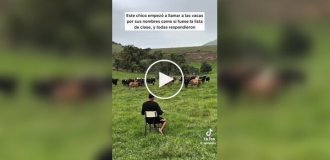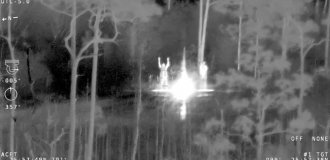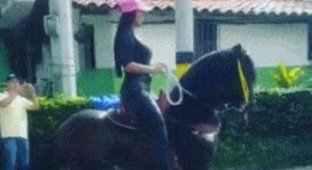Did you know that an ant colony can have more than one anthill? Moreover, connected anthills constantly exchange food, workers and offspring and together act against the whole world. And such colonies can be very large. The supercolony of Argentine ants, for example, has already captured several continents! 
Scientists do not have clear criteria for the term "supercolony", but one thing is for sure: they are always large. The "state" includes dozens and hundreds of anthills, millions or even billions of workers work for the benefit of a common home on an area the size of a small city. Or even more... 
Each anthill is surrounded by a network of paths leading to hunting grounds or friendly anthills.
The vast majority of supercolonies are founded by invasive (foreign) ants outside their range. After all, in new lands they have neither natural enemies nor diseases with parasites - the main reasons for the collapse of supercolonies. And also the inhabitants of the ant federation must be relatives - which is easier to arrange in new territories. But why this is important, we will tell you a little later. 
Seryoga, we will not go further, there is the Great Ant Wall here.
Only about 1% of the 14,000 species of ants are capable of creating supercolonies. And the red forest ants, well known to us, are among them. Collective and sociable even by the standards of other ants, these insects can create supercolonies within their native range - which is rare. Such colonies are especially common in the USA and Japan, but if you're lucky, you can also find an ant state in the nearest forest. Such supercolonies are a normal phenomenon, and they do neither harm nor good for the environment. 
Red forest ants, by the way, are not one species, but about a dozen and a half relatives occupying similar niches. But even specialists have a hard time distinguishing them from each other.
But colonies of red fire ants in the southern USA, China and Australia are much more dangerous. These ants quickly adapt to the environment, actively spread and are not afraid to fight with other species for living space. They did not conquer the whole world only because of their love of heat and craving for constant wars: supercolonies of fire ants fall apart into separate clusters that fight with each other no less than with other species of ants. 
Fire ants can also build crossings from their own bodies and even float down rivers. They developed this ability to protect themselves from typhoons and floods, which are common in their native region.
That's why the world has been taken over by Argentine ants. They are not impressive in themselves: small, non-biting, non-venomous, they live anywhere and eat anything. But their introduced range is simply enormous. In Europe, they have grabbed a 6,000 (!) kilometer-long piece of coastline, in the USA - a 900 kilometer-long section, in Africa - the entire far south. They have completely populated dozens of islands, including New Zealand and Hawaii, and are actively expanding their presence in Australia. And almost all of them perceive themselves as part of one family. Bring an Argentine ant from Australia to Portugal - they will accept it as their own. In fact, we have before us one large supercolony, located on several continents at once. But how is this even possible? Even people have a hard time supporting states located on several continents at once! 
Map of the distribution of Argentine ants around the world.
The secret lies in the organization of society. In humans, the size of communities is limited by the number of individuals that the average person can remember by sight. If there are too many people, the community is divided into separate cells: departments in a corporation, military units, interest groups, and occult lodges. And each cell works first in its own interests, and then in the interests of the entire society. Ants are guided by smells. The similarity of smell is a kind of password that opens access to friendly interactions, even if the insects are seeing each other for the first time. And this mechanism has no limits on the maximum number. 
Argentine ants are honey-colored insects that are only 3-5 millimeters in size. 
This system, however, is not without its drawbacks. Here is a predatory bug that has piled up a whole mountain of ant corpses. Now the ants accept it as one of their own and are ready to be friends with it.
If 100 anthills have the same smell, they will unite into a single system. If 1000, then they will unite too. The smell of the colony - a combination of the aromas of the queen's pheromones, as well as the disinfectants of the workers - is determined genetically, and this mechanism of cooperation helps colonies find relatives and work together. 
Fly, my daughter, build yourself an apartment. And then we will help you!
And now the most important thing: almost all Argentine ants outside their natural range are related. Hundreds of billions, if not trillions, of ants are descendants of one queen, who was taken from Argentina 100-130 years ago. But even with such input, their genetic uniformity is surprising: the species has virtually no mutations that change the smell of pheromones. Only small colonies in Hawaii and California have accumulated enough changes to bud off from a global supercolony. All the rest continue to conquer the planet as a united front, like one big family. 
Ant queens can look completely different, but they are always larger and more powerful than regular workers.
And this situation looks very unpleasant for the planet. The Argentine megacolony oppresses local insect species and disrupts the functioning of the ecosystem. The biosphere has not had time to adapt to the invasion of people from Africa, and then a huge army of Argentine ants arrived right after them!
Add your comment
You might be interested in:





























